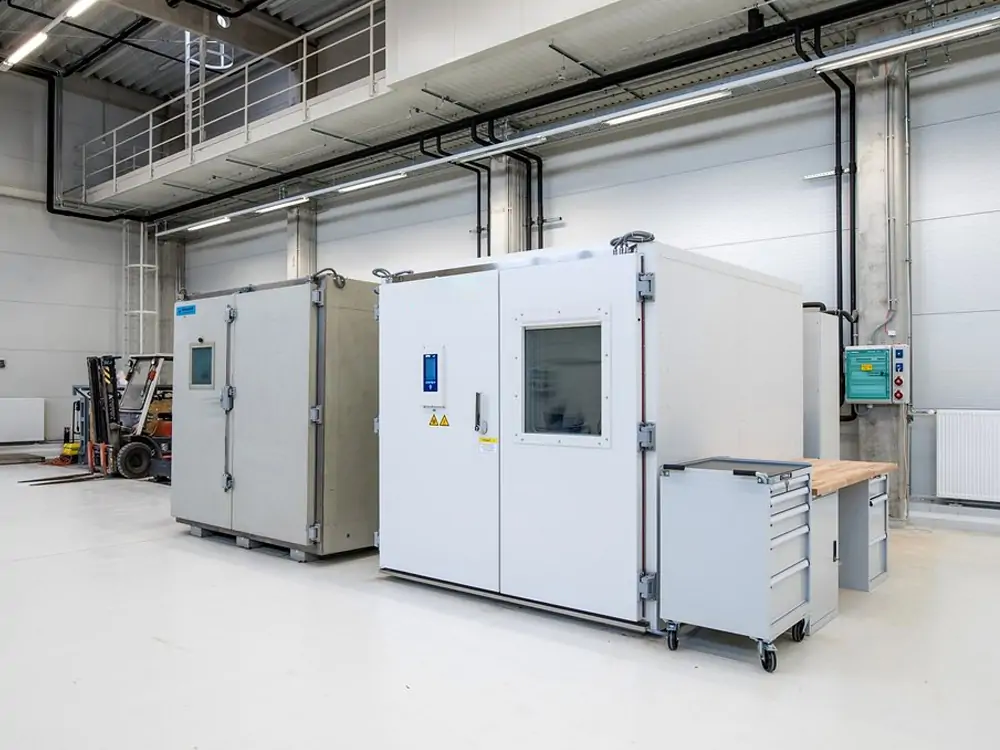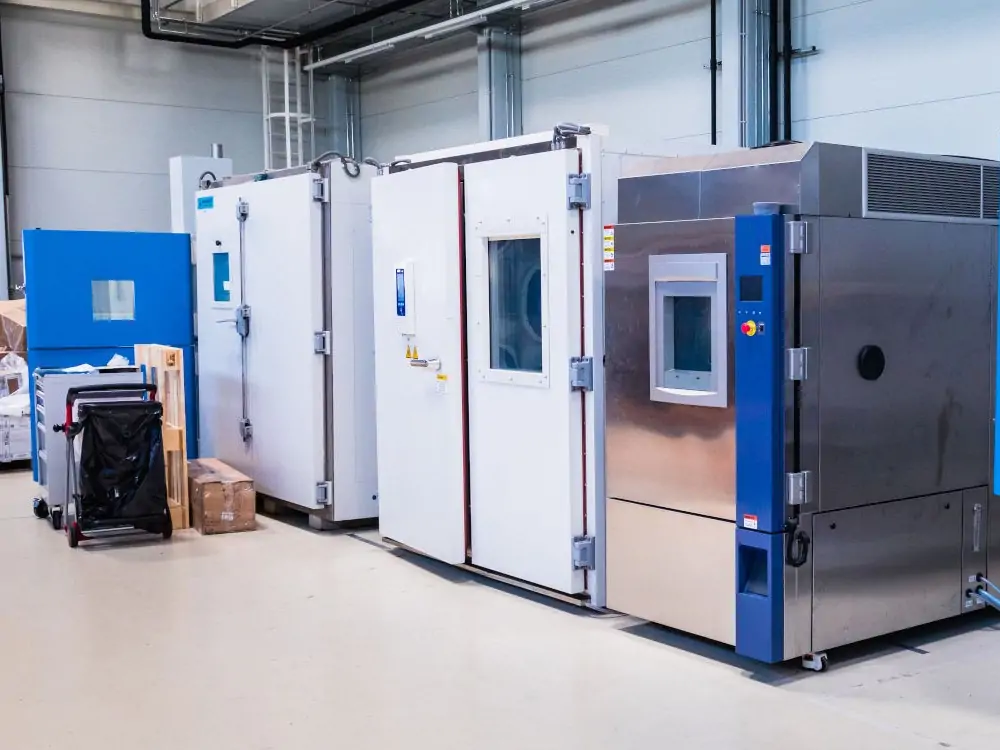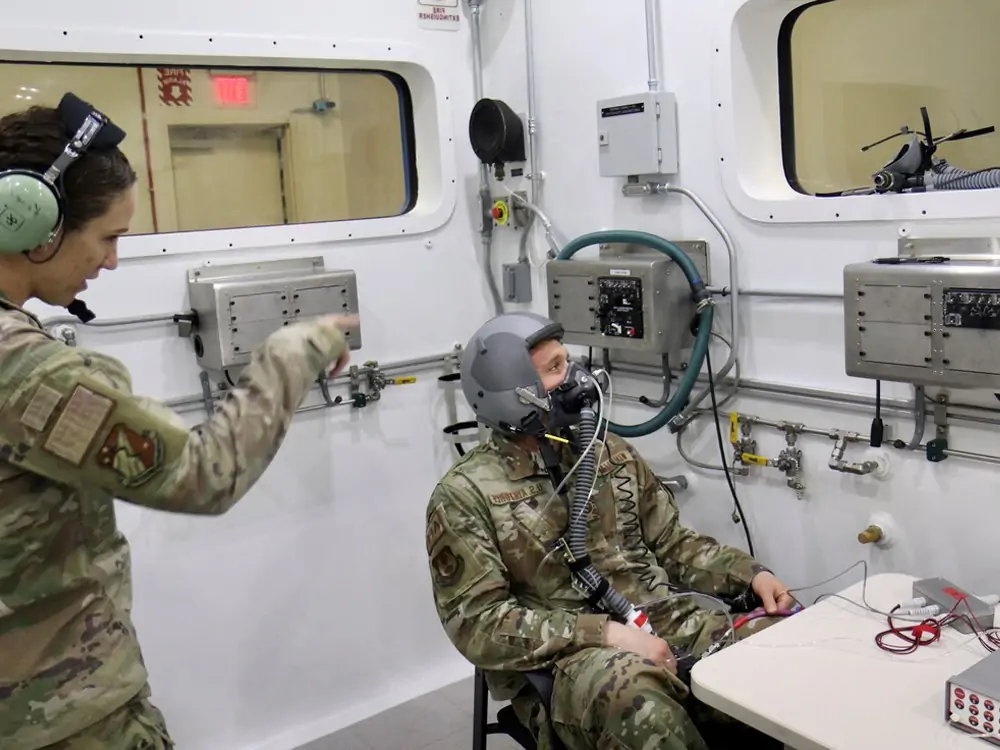Altitude test chambers are vital in current product testing. The chambers imitate high-altitude conditions. Knowing how things perform under challenging settings aids researchers, designers, and builders. Discover the objective, its operation, and its significance. This informative blog demystifies altitude test chambers.
Understanding Altitude Test Chambers
Defining Altitude Test Chambers
High altitude test chambers are carefully built to simulate high-altitude conditions. They purposefully engineer to simulate atmospheric conditions at altitude. Chambers create controlled environments where products experience low-pressure settings like elevated terrain.
Purposeful Engineering for Replication
Altitude chambers replicate heights to test products. This planned design allows extreme condition testing of a product’s performance and durability. Professionals utilize altitude test chambers to evaluate product performance at different elevations.
The Essence of Altitude Testing: Necessity Across Industries
Indispensability in Diverse Industries
Altitude testing proves indispensable across a spectrum of industries. It is versatile for aviation components, medical gadgets, automotive systems, or electrical equipment. These chambers imitate real-world scenarios, giving manufacturers vital insights.
Recreating Real-World Challenges
Products developed for different altitudes must be tested. These chambers simulate high-altitude conditions. It helps manufacturers learn how their products would perform in real life. This goes beyond theoretical considerations. To help analyze a product’s ability to survive altitude-related atmospheric and climatic changes.

Working Principles of Altitude Test Chambers
Creating Low-Pressure Environments
The working principles of altitude test chambers involve creating low-pressure environments. This is achieved by carefully reducing the air pressure within the chamber. It replicates the lower atmospheric pressure experienced at higher altitudes. The controlled air removal sets the stage for a testing environment. It simulates the thin air prevalent in elevated terrains.
Temperature Control in Altitude Testing
Temperature control is integral to the altitude testing process. These chambers incorporate precise temperature regulation to replicate the temperature fluctuations experienced in high-altitude environments. Altitude test chambers simulate altitude issues by combining low-pressure conditions with temperature fluctuations. It can ensure a complete product performance evaluation.
Applications of Altitude Test Chambers: Navigating Industries
Aviation Industry: Certifying Aircraft Reliability
In the aviation industry, altitude test chambers have emerged as indispensable tools. This is to certify the reliability and safety of crucial aircraft components. From engines that propel aircraft to electronic systems controlling navigation and communication. It is essential to check aviation equipment for conditions mirroring those at high altitudes.
Ensuring Safety in Aviation Equipment
Aviation equipment undergoes severe testing, making altitude test chambers essential. These chambers allow manufacturers to test their electronic systems in low-pressure, high-altitude flight conditions. The purpose is to ensure that aviation equipment exceeds safety standards, improving air travel reliability and security.
Crucial Role in Engine and System Performance
From strong aircraft engines to complex electronic devices. The aviation industry relies on altitude test chambers for evaluations. Simulations of high-altitude, low-pressure situations can help manufacturers. To understand how engines and electronics will perform in the harsh skies.
Pivotal Testing for Future Aviation Advancements
As the aviation industry continues to evolve with technological advancements, altitude test chambers help innovative technologies fulfil air travel safety and reliability standards. Whether testing the latest engine design or cutting-edge avionic systems, these chambers play a crucial role in certifying the performance of aviation equipment.
Medical Devices: Elevating Healthcare Assurance
Medical devices are an integral part of modern healthcare. They are also altitude tested to ensure patient safety. Altitude test chambers can simulate conditions experienced during air transport or deployment at high altitudes. It can provide insights into medical devices’ performance in real-world scenarios.
Ensuring Medical Device Functionality
Altitude testing ensures that medical devices maintain functionality even when transported by air or deployed in areas with varying altitudes. From portable diagnostic equipment to life-saving devices, manufacturers test mobile diagnostic equipment and life-saving gadgets in altitude test chambers. It can improve medical care reliability and effectiveness.
Contributing to Safer Healthcare Practices
The significance of altitude testing extends beyond ensuring product functionality. It contributes to safer healthcare practices by verifying that medical gadgets can withstand air travel or deployment in different altitudes. Altitude test chambers enhance the safety and reliability of healthcare services.
Electronics and Automotive Industry
Electronic components and automotive systems are increasingly integrated into various altitudes. They undergo altitude testing to assess their performance in diverse environmental conditions. This comprehensive testing spans everything from vehicle onboard electronics to communication equipment. It can provide manufacturers with essential data to ensure the functionality of these integrated systems.
Evaluating Onboard Electronics in Vehicles
Altitude test chambers help evaluate the performance of onboard electronics in vehicles. From sophisticated engine control units to cutting-edge infotainment systems. These chambers simulate the conditions of different altitudes. Manufacturers can assess how these electronic components will function when integrated into the complex environment of modern vehicles.
Ensuring Communication Equipment Resilience
Altitude testing evaluates the reliability of communication equipment in different environments. Whether it’s navigation systems, wireless communication modules, or advanced driver-assistance systems, altitude test chambers show manufacturers how these components will work at different altitudes.
Meeting Industry Standards for Integration
Electronic components and automotive systems are becoming more integrated at various altitudes. Altitude testing ensures that these systems meet industry standards for reliability and functionality. This proactive approach contributes to the vehicle’s overall safety and performance. It can align with the ever-increasing demands for cutting-edge technology.

Significance of Altitude Testing
Ensuring Product Reliability
The main benefit of altitude testing is product reliability. Manufacturers can find high-altitude design flaws, vulnerabilities, and failures by testing items.
Compliance with Industry Standards
For products in industries like aviation, healthcare, and electronics. Compliance with industry standards is paramount. Altitude test chambers provide a controlled testing environment that meets industry standards. It can help manufacturers meet strict regulatory requirements.
Risk Mitigation
Altitude testing is a crucial risk mitigation strategy. Manufacturers can reduce real-world high-altitude product failures by identifying and rectifying potential issues during the testing phase. This proactive approach enhances product safety and longevity.
Altitude Test Chambers: A Closer Look
Simulating Altitude Conditions
Altitude test chambers simulate a range of altitudes, from moderate elevations to extreme heights. This versatility allows for comprehensive testing, ensuring that products are evaluated under conditions relevant to their intended use.
Incorporating Altitude Variation
The chambers don’t merely create a static low-pressure environment. They also incorporate altitude variations. This testing accounts for the fact that products may experience changes in altitude during operation. Such as an aircraft ascending or descending.
Considerations for Temperature and Humidity
Altitude test chambers also factor in temperature and humidity variations. This holistic approach ensures that products are evaluated under certain conditions, mirroring the complexities of real-world high-altitude environments.
Choosing the Right Altitude Test Chamber
Understanding Testing Requirements
Altitude testing chamber begins with a thorough understanding of testing requirements. Consider the elevations and environmental conditions your goods will face.
Capacity and Size Considerations
Altitude test chambers come in various sizes and capacities. Choosing the right chamber involves considering the quantity of products to be tested. A larger chamber may be necessary for testing larger or multiple items simultaneously.
Integration with Other Testing Features
Altitude test chambers may have vibration testing, temperature cycling, or humidity control. Depending on your product’s testing needs. Consider whether integrated features align with your testing requirements.

Conclusion: Elevating Product Reliability with Altitude Testing
In conclusion, altitude test chambers are essential tools in product testing. They ensure products can withstand the challenges posed by high-altitude environments. It is from aviation components to medical devices and electronic systems. Product reliability, safety, and industry standards depend on these chambers.
They understand altitude test chambers’ working principles, applications, and significance. Manufacturers, designers, and testers can make product development and decision-making decisions with this expertise. As industries evolve and products become more integrated into various environments, altitude testing remains a cornerstone for resilient and dependable products.